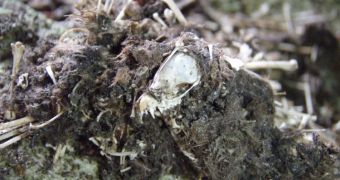Over the past few years, biologists have noticed that numerous bat communities were falling prey to what was termed the white-nose syndrome (WNS). All attempts at figuring out what was causing the condition have failed until recently, when a team found the fungus responsible for the plight.
In a paper published in the October 26 issue of the top scientific journal Nature, investigators with a group that included the US Geological Survey (USGS) explain that the fungus Geomyces destructans is the cause of deadly WNS infections in most bat species.
The research itself was conducted in Madison, Wisconsin, at the USGS National Wildlife Health Center (NWHC). Unlike other works, the new study actually provides direct, testable evidences linking the fungus with WNS infections sweeping through North America.
During the research, Hibernating brown bats were exposed to G. destructans. The investigators noted that all of the little creatures developed WNS. In addition, it was found that infected individuals could pass the condition among themselves, like a virus.
This particular discovery might explain why the syndrome is so deadly, and capable of displaying a 100 percent kill rate in certain bat colonies. Bat deaths are devastating to ecosystems, and cost farmers billions in pest control products.
“By identifying what causes WNS, this study will greatly enhance the ability of decision makers to develop management strategies to preserve vulnerable bat populations and the ecosystem services that they provide in the US and Canada,” USGS Associate Director of Ecosystems Anne Kinsinger says.
Bats provide natural cleaning and disinfection services, in addition to exerting pest control. They eat numerous types of insects, protecting crops from predators. The US Department of Agriculture estimates that it saves billions of dollars yearly thanks to the presence of bats in the field.
“While our study confirmed that G. destructans is spread bat-to-bat, it is also important to note that virtually all pathogens, especially spore-producing fungi, are spread by multiple routes,” explains USGS microbiologist David Blehert.
“"This is the reason that in an effort to further control the spread of WNS, resource management agencies have implemented universal precautions,” adds the expert, who was an author of the study.
These measures include “limiting human access to sensitive environments occupied by bats, decontaminating equipment and clothing moved between these environments, and restricting the movement of equipment between sites,” he adds.
In addition to USGS experts, the team also included scientists from the University of Wisconsin-Madison, the Wisconsin Veterinary Diagnostic Laboratory, the University of Tennessee-Knoxville, the New York Department of Environmental Conservation, and the US Fish and Wildlife Service, among others.

 14 DAY TRIAL //
14 DAY TRIAL //